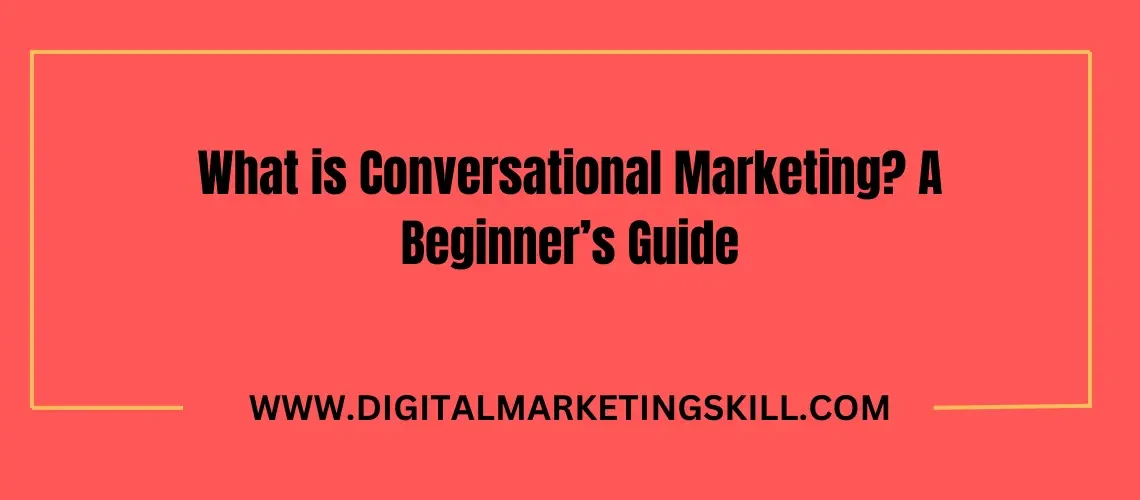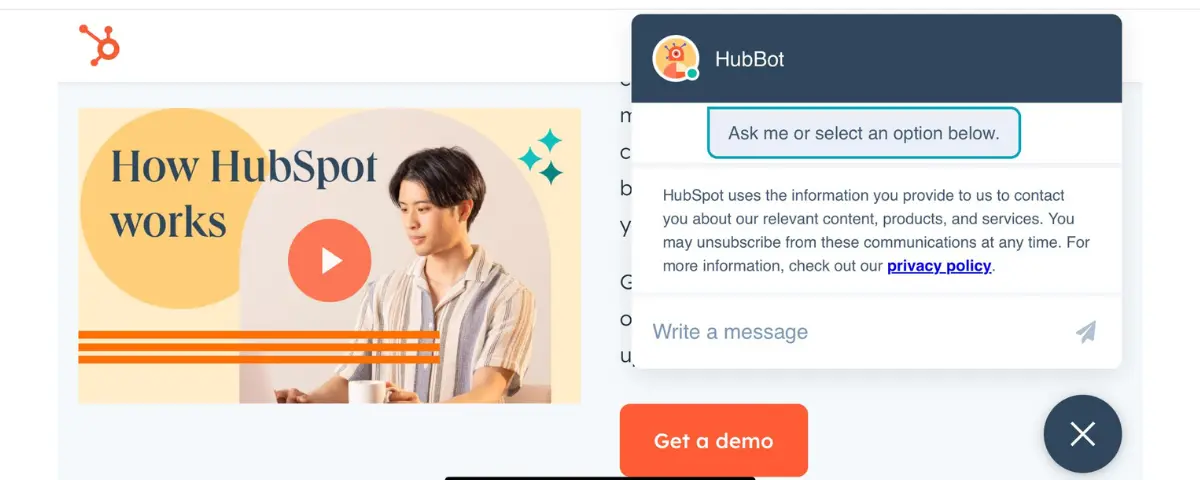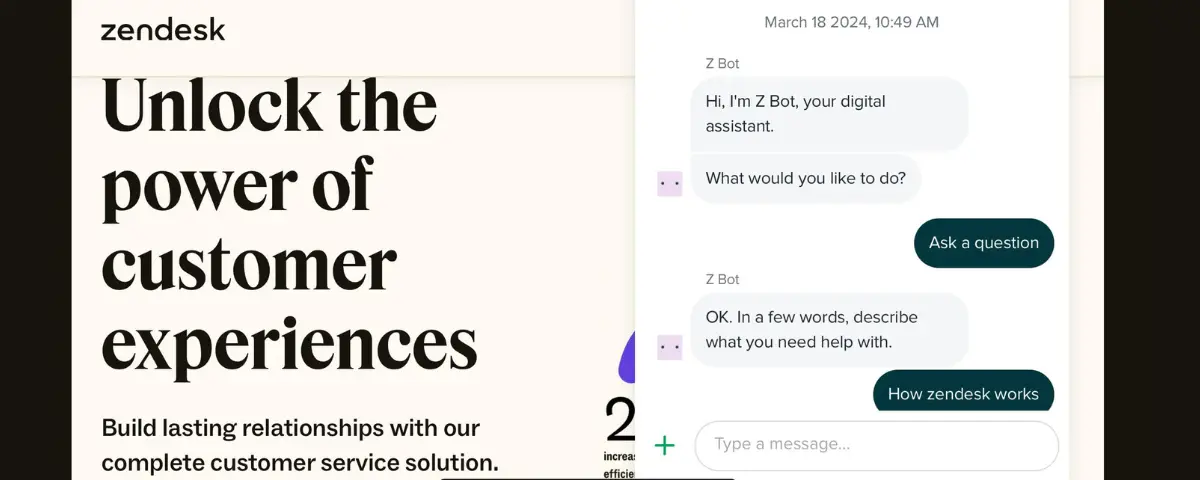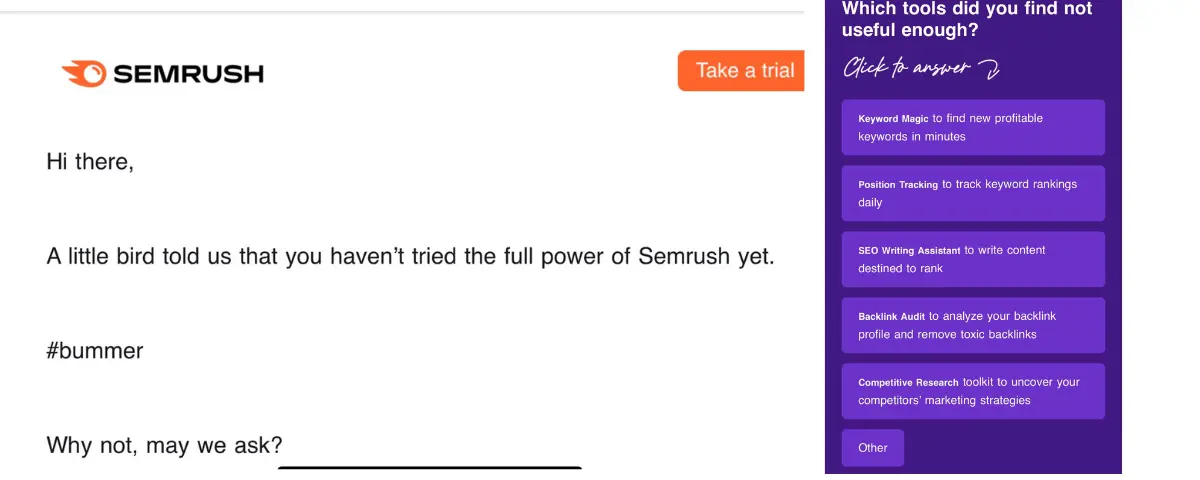As a new business owner, are you interested in knowing more about conversational marketing? Are you curious about the reasons behind the popularity of conversational marketing and how you may leverage it to increase your online sales? With the help of conversational marketing, you may increase website sales and enhance user experience.
All of your interactions with your audience are, at their core, and this is what gives opportunities for conversation. You should know that you are releasing content that impacts knowledge to your customers and they are finding you through word of mouth, social media, SEO, and other distinctive methods.
Therefore, this has led them to want to have more conversations, and in all organizations, conversations play a big role in marketing strategies. Due to the big role conversation plays, there has been a need for a digital marketing process called conversational marketing. Now let’s closely into what conversational marketing is all about.
What is conversational marketing?
Conversational marketing is a method for connecting with customers using live chats, chatbots, and voice assistants.
It is a word used to describe the process of interacting with customers, both the present and potential ones, via conversational channels like messaging applications, social media, and chatbots. It’s a great strategy to establish a more personal connection with customers and build connections that may result in conversions and sales.
This approach makes it easier to draw in more prospects, comprehend their needs, and move them through the sales funnel more quickly.
How does conversational marketing work?
Your customers might have problems like:
- How to get a product or pricing information?
- Will they be attended to at any time?
- Want Personalized advice
- Want to be able to negotiate prices or offers
However, as an organization or business owner, you might have missed them.
Conversational marketing works in a way of assisting firms in responding to these inquiries in real time (or, even better, they can anticipate and respond to them before they arise), learning more about the requirements, preferences of consumers, and making insightful, pertinent recommendations.
Get 50% Discount to Master ALL Aspects of Digital Marketing That Can Earn You $2,500 - $5,000 a month (Even if you are a complete beginner!)
Our students that intentionally implement what they learn from our digital marketing course make back the entire course fee within a single month or more after completing our course because our course gives them many income generating options with unlimited earning potential with no age or location barrier. The best part is no technical skills are required.
An opportunity to change your lifestyle and make money working from anywhere in the world. The results our students get from our digital marketing course prove this could be applied to any market or country and that it is designed for any skill level and work background.
*By signing up, you agree to our privacy policy and terms of service.
Brands can go one step further by utilizing conversational AI chatbots in messaging apps or online live chats to provide constant responses to inquiries while enhancing data gathering, and analysis.
Conversational AI-based chatbots, in contrast to traditional rule-based bots, use natural language processing, machine learning, and conversational design to produce conversations that are more authentic and human-like.
Types of conversational marketing
Here are some types of conversational marketing that will help you build and grow your brand or business.
1. Real-time conversation
It is currently one of the most widely utilized customer service techniques. They engage with the audience to calm their fears and offer encouragement. To communicate with customers, they employ a variety of media, including Facebook, Twitter, and Instagram.
2. Voice Assistant
You can communicate with customers by using a voice assistant, such as Alexa or Google Assistant. When you use voice technology, it will increase your audience’s interest in what you have to offer through meaningful connections.
However, there are situations when texting fails to reach the intended audience because the information may not be clear enough. Using a voice-assisted program or app could be the solution to this issue.
3. Chatbot
The chatbot communicates with customers through SMS, the brand website, and several social media sites by utilizing the AL software.
It was unusual in the past days to have a chatbot respond to inquiries. People’s questions went unanswered since they couldn’t grasp what it was saying and became confused.
However, with the advancement of technology, chatbots are now able to provide insightful responses to inquiries, giving the impression that the audience’s issue has been resolved.
The chatbot’s primary benefit is its 24/7 availability. However, one of its disadvantages is being automatically configured to only respond to predetermined inquiries.
4. Email
This method of marketing is professional because it is not entirely conversational. However, cultivating a rapport with your intended audience is also beneficial. Email allows you to connect with your audience by sending them emails about what is happening and what they need to know that relates to your business
5. Online Networking
There are many social media channels where you can interact with your customers. Customers prefer face-to-face interaction over chatbots and this helps to strengthen your brand. This is one of the method we currently use at digital marketing skills to communicate with our audience and enrol them in some or all of the courses to acquire marketing skills.
Benefits of conversational marketing
Marketers can increase acquisition, boost conversion rates, strengthen customer loyalty, and increase engagement throughout the whole customer lifecycle by giving customers the ability to ask questions, reply to marketing communications, and communicate with brands in real time.
Let’s examine some benefits of conversational marketing in more detail.
1. Enhanced income generation and conversion rates
Conversion rates and income generation are two areas where conversational marketing eventually helps your company.
You should anticipate consistent growth in your sales with increased engagement, fewer distractions, and lower abandonment rates when you make use of conversational marketing to engage your audience.
You can also collect a greater number of leads to accelerate the growth of your organization by making the form-filling process more enjoyable for your users.
2. High engagement level
Engaging customers in direct and interactive connection is the core of conversational marketing.
One or a few related fields are displayed at a time on forms using conversational layouts, which engage users. This reflects how talks happen in real life and how they naturally transition from one topic to another.
By taking customers through your form step-by-step with conversational forms, you can quickly capture their interest.
Also, you can use a generic title rather than individual field labels to explain what’s on a particular section of your form because related fields can be combined on one page.
Finally, this enables you to speak to your customers more personally in your page titles, which is a great approach to increasing customer loyalty.
3. Improved customer satisfaction and CX
By offering individualized contacts and promptly resolving issues with customers, conversational marketing helps to enhance the entire customer experience. It also assists companies in building closer ties with their customers to now them better.
You can gain more insight into your customer’s needs and requirements by having two-way interactions. Speaking with clients can also add a more personal touch to their online purchasing experience.
4. Important customer data gathering
When customers feel engaged in a conversation with your organization, they are inherently more comfortable sharing in-depth details about their issues or questions.
However, if the form is simple and includes many fields, individuals might not feel motivated to fill it out carefully and quickly. This is not ideal. If respondents carefully considered their answers before completing your form, it would be far more advantageous for you.
Conversational forms can significantly lessen user fatigue due to their ability to divide a longer form into smaller sections. Therefore, customers can stay engaged for extended periods thereby focusing on a single question at a time.
If you create a fun and engaging survey experience for your customers, you will be amazed at the insights you obtain from your qualified leads.
Therefore, if you want better quality leads and more in-depth answers to your open-ended questions, using conversational forms is a great tactic.
5. Enhanced brand loyalty
Increasing customer loyalty is one of conversational marketing’s long-term advantages.
A website visitor is more likely to fill out any other forms you may have in the future if they enjoyed filling out one of your earlier forms.
For your potential customers, personalized experiences are relatable on a human level. it helps more individuals to begin associating with your brand favourably the more you can connect with them.
Also, offering a memorable user experience may be achieved most effectively by implementing the design principles of conversational marketing.
6. Saving costs
Brands can automate up to 90% of customer interactions with conversational AI and automation. This results in more cost-effective and efficient use of human resources and allows them to focus more on other aspects of their business.
7. Constant availability
With conversational AI chatbots, businesses can assist and serve customers 24/7 by automating their replies and answering customers’ enquiries. This will not only improve customer satisfaction but also lower the rate at which purchases are abandoned.
Strategies for making your digital marketing more conversational
Developing a conversational marketing plan doesn’t have a single, perfect method. Although the following action plan can help you make decisions, it depends on several variables such as, the company’s objectives, its customer base, and its product or service offers. Let’s check out those strategies that can help with your decision making:
1. Establish the KPIs and business objectives
Establishing your business goals and objectives is a smart move before deciding to put your conversational marketing approach into action. Would you like to use any social media platform chatbots to promote products to your customers in order to boost sales through social media? Or perhaps you prioritize your conversation ratings above all else because you want to increase customer satisfaction?
Here are some of the metrics used to measure the effectiveness of your conversational marketing efforts:
- Engagement metrics. use to measure response rate, average interaction time, or number of messages that are sent or received.
- Awareness metrics. it is used to measure reach, impressions, or click-through rate
- Leads and sales metrics. use to check the number of leads generated, e-commerce conversion rate, or average order value
- Loyalty and customer satisfaction metrics. this is for customer retention rate and average customer lifetime value
2. Message to convey
The foundation of conversational marketing is communication, and effective communication requires a message that is clear and uncomplicated. Consider what messages would most likely catch your attention if you were the customer.
Make an effort to keep the message simple and concentrate on one idea. For instance, you could use the exchange of messages to get feedback from customers before discussing something else and a compelling welcome message is the best way of starting the conversation.
3. Channels of communication
The ideal locations to start implementing conversational marketing are social media, messaging applications, and your website.
- Using bots to automate your Facebook live conversation
- Enhancing your website with a live chat widget
- Including a chatbot on Instagram
- Configuring a chatbot for WhatsApp Business
Different marketing channels operate in different ways. For instance, you might want to use a chat platform like Facebook Messenger if you want your chatbot to assist customers with product recommendations. Use a FAQ customer care chatbot and integrate it into your website if you want your chatbot to respond to inquiries from customers regarding your goods and services.
You can use and implement conversational marketing into any selected communication channel of your choice.
4. Select the platform
Conversational marketing is the future of digital marketing as we know it. As one might expect, numerous companies provide unique solutions. Adding live chat and chatbots to your website and social media has never been easier.
Check out this list of conversational chatbot platforms.
- Drift conversational marketing techniques: This is a platform that enables businesses to engage with their consumers via custom bots.
- Qualified: These are Lead creation tools with integrated CRM software to assist you in creating your own customer database.
- MobileMonkey: This is a powerful solution for developing advanced Facebook chatbots.
- Intercom: These are conversational marketing and customer support tools that are appropriate for medium-sized and enterprise enterprises (you may wish to explore one of the popular Intercom alternatives for small businesses).
5. Educate your teams on how to use tools
It’s easy to converse with hundreds of customers when you use marketing chatbots and pre-written responses. However, this also implies that you have to learn a few things before everything functions as intended, just like with any new technology.
Handling angry customers with AI bots might go awful and as a result of this, you need to be ready for any scenario. run through some typical customer service scenarios in case your marketing chatbots are mistaken for customer support representatives. You can program alerts and notifications for your mobile device regarding customers who request to speak with a real representative.
6. Create and test your bots
Customers ought to be able to communicate with businesses in the same way that they would with friends. This implies that companies must be more personable, responsive, and always open. Chatbots with a good design are crucial. A well-designed chatbot can boost your sales by 67%.
Using a visual chatbot builder, you can create various chatbot flowcharts and decision trees with several discussion options. Nevertheless, using pre-made chatbot templates is a lot simpler.
7. Analyze your performance
If you’ve selected the appropriate metric, tracking the success of your conversational marketing efforts is rather simple. However, you can view the drop-off rate for each message sent by your chatbot if the outcomes are unsatisfactory.
You can discover if a certain message discourages customers or that they are more interested in something else. Also, you may make your chats more productive by looking at the outcomes for every message node.
Conversational marketing examples
For companies looking to establish a more intimate relationship with their customers, conversational marketing tactics are ideal. By utilizing them, you may increase sales and improve customer retention rates by giving your customers a sense of value and appreciation.
You may use conversational marketing in every aspect of your company. Examples include social media, chatbots, sales, and customer service/support. Additionally, new applications for it are coming up every day.
Therefore, in order to show how they are used, we have examined the different conversational marketing examples.
1. Chatbots
A chatbot can be activated when a user visits a particular website or after a wait. Then they are asked a series of questions immediately after a customer messages them.
You can entice website visitors with free information, product samples, or promotional codes. After which your chatbot can ask follow-up questions to better categorize customers and locate eligible leads.
Above is an image of Hubspot website page, depicting how a chatbot is used to converse with customers.
2. Customer Service
Online chatting is a conversational marketing tactic that employs live chat software to engage with customers. It enables businesses to offer customer service and support, as well as transmit marketing and sales messages, via live chat interactions.
This mode of conversing with customers is a feature that becomes an essential component of any website or online store. You can change the style and feel of the messages to make them more consistent with your brand. While a live chat widget may be primarily for customer service, it also plays a vital marketing function.
3. Lead Generation
Conversational forms represent the future of online forms. The most common example of conversational marketing in action is the usage of lead generation chatbots.
They are ideal for automating the lead capture and qualification process as new leads arrive.
Filling out a normal form can be tedious; however, the usage of lead generation in conversational marketing has resulted in the invention of conversational forms to replace those repetitive and boring forms.
It also helps to offer one question at a time and in a basic manner. As a result of this, users are more likely to complete the forms.
An example of how this is used is depicted by Semrush where they send out emails to their customers, trying to find out which of the tools on their web page they find useful for them.
Finally, you can convert a conversational form into a quiz to increase lead generation.
4. Social Media Chat
Social media is one of the most effective strategies to find prospective buyers. Many businesses employ the strategy of capturing customers at the initial touchpoint.
A guided chat panel integrated into your social media messenger can enable customers to shop in the most personalized way. It will assist them in finding the best product for their needs, while also creating a one-of-a-kind experience for your company.
Conclusion
Conversational marketing is all about having real-time, personalized chats with customers to understand their needs and offer tailored solutions. By using tools like chatbots and messaging apps, businesses can create better relationships, boost engagement, and increase sales. It’s a modern way to connect with customers, provide great service, and build loyalty in today’s digital world.
If you want to learn how to have more interaction with your customer then, click here to learn how we can help you achieve that.
FAQs
What is conversational advertising?
conversational advertising is a new method of digital advertising that allows for more tailored and organic customer interaction With the help of artificial intelligence (AI) and conversational interfaces.
Why should a company use conversational marketing?
One of the reasons for using conversational marketing is that there is higher customer engagement, and this is one of conversational marketing’s main advantages. While one-way direct marketing speaks directly to customers, two-way messaging generates a reaction. Also, rich media utilization in messaging creates a chance to initiate and conclude the sales cycle.
Is conversational marketing different from traditional marketing?
The newest technological innovations, like live chat, chatbots, messaging applications, social media platforms, and voice assistants, are utilized by conversational marketing to customize the marketing process with new offers and newsletters. This is very different from traditional marketing.
More Resources
Lead Generation and Customer Acquisition Strategies
Lead Generation | A Complete Beginner Guide To Generating Leads









